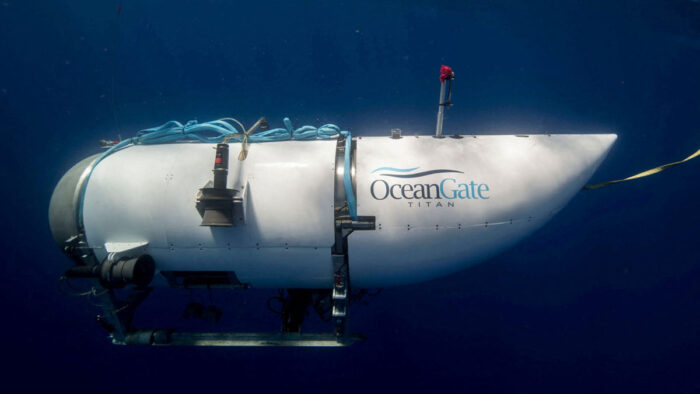Jun 27 2023
Titan Disaster and Risk vs Benefit

There has been a lot of discussion regarding the recent disaster of the Titan submersible. Was the risk justified? Who should be responsible for the safety issues? Who should be on the hook for the millions of dollars the rescue effort took? And why did this tragedy garner more media coverage than 600 people dying off the coast of Greece when an overcrowded fishing crawler capsized?
To review, OceanGate is a submersible company that offers expeditions to the wreckage of the Titanic and other experiences. The company has been operating since 2008, making more than 200 dives. The Titan was their latest vessel. It has made two previous successful trips to the Titanic, one in 2021, and one in 2022. The trip this month was it’s third trip. During descent to the wreckage, about 1 hour 45 minutes in, the control vessel suddenly lost contact with the Titan. It is believed that at that point the Titan suffered a “catastrophic implosion”. Essentially the pressure compartment failed. Even the tiniest crack would be enough, as any weak point would then collapse the entire chamber, kind of like popping a balloon but with high pressure on the outside rather than the inside. The only bright side of this being the fate of the Titan is that death would have been sudden, and the five passengers were not slowly suffocating for days trapped in the dark deep under water.
The disaster has sparked a lot of discussion about whether the entire enterprise is worth the risk. Some have called for a halt to any sight-seeing trips to the Titanic (anything other than research). At the other end of the spectrum was the OceanGate CEO Stockton Rush who now famously said:
“You know, at some point, safety is just pure waste. I mean, if you just want to be safe, don’t get out of bed, don’t get in your car, don’t do anything. At some point, you’re going to take some risk, and it really is a risk-reward question.”
Being charitable, what I think he is saying is that safety efforts have diminishing returns. It takes more and more effort to gain smaller and smaller increments of safety, and at higher cost. Safety is risk-reward, and I often point this out when people criticize new technologies for theoretical risks. It is helpful to put things into perspective. I like to remind people that we routinely pump explosive and deadly gas into homes. Is the benefit worth the occasional explosion or gas leak? One of the greatest risks many people take routinely is car travel. About 1.3 million people die annually worldwide from car accidents, almost 43,000 in the US in 2021. If you want to stick to pure entertainment, 57 people died in ski accidents last year.
So Rush had a point – there is no such thing as perfect safety, and we accept risks everyday in our lives as long as we think the reward is worth it. But this approach is not enough, and critics of Rush say he was brushing aside legitimate safety concerns. While perfect safety is a pipe dream, we can engage in reasonable safety precautions. Auto deaths have been decreased by carefully regulating the industry and through traffic laws. You can minimize your own risk (not to zero) by driving safely. So the real question is – did Rush take reasonable and appropriate safety precautions?
The answer here appears to be no. The Titan design was new and untested. He uses a carbon fiber-titanium design, whereas a more traditional design would be all titanium. Some experts believe that carbon fiber was simply the wrong kind of material for this kind of stress, and the implosion seems to have justified that assessment. But more importantly, Rush decided not to have the Titan design independently tested and certified for the depth of the Titanic. The porthole, for example, was not rated for that depth.
But Rush wanted to be the “Space X” of the sea. However, NASA had to approve Space X vessels for human flight into space. So if Rush wanted to model his company after Space X, he should have sought out independent certification. This fuels the criticism of his critics – he rushed to expand his company’s service, wanting to make deep sea travel cheaper, but did so by cutting corners. Titan did not hold up to the repeated stress of diving to the Titanic depths. On the third voyage, it failed. It’s always easy to say “I told you so” after the fact, but there does appear to be a paper trail here of experts warning that the Titan was untested and probably unsafe.
In the end, if people want to spend $250,000 on a thrilling but highly risky adventure, I see no problem with that. The same goes for space travel. It’s risky. There is also never a guarantee of safety. At some point we need to accept risks. But it is also reasonable to have a system in place to minimize risks, and independent certification by expert engineers and scientists is a good place to start. Yes, this is a burden and does add to cost. Taken too far this can needlessly stifle an industry. The question is not whether risk is acceptable or if regulation is a burden – it’s what is the optimal balance of both. Here is seems Rush did not take the optimal balance. He could have easily had the Titan independently tested, as was recommended. He took an unnecessary risk. This is the plot of every disaster movie ever made. It’s a cliche. But sometimes it’s real.






